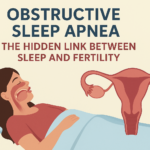What is Glaucoma?
Internally, our eye is like a ball. The cavity inside is filled with fluid called vitreous humour. Outside the lens, there is a small cavity called the anterior chamber. This chamber is filled with another fluid called aqueous humour. Our eye continuously produces aqueous humour. This fluid supplies the eye with all the nutrition it requires and also maintains the pressure of the eye.
Under normal circumstances, when the freshly produced aqueous humour moves into the anterior chamber, an equal amount of the fluid previously present drains out. This drainage happens through an area called the drainage angle. This machinery maintains the quantity of the fluid in the small cavity and does not allow it to unnecessarily accumulate over there. This process is the main reason for the stable eye pressure also called intraocular pressure(IOP).
Sometimes, there are problems with the functioning of the drainage angle or any other part of the eye, which does not allow aqueous humour to drain out properly. This leads to an over-accumulation of the fluid, thereby increasing the intraocular pressure. This pressure damages our optic nerves. Thus, glaucoma is a progressive neurodegenerative disease which damages the optic nerve head.
Our optic nerve is made up of millions of nerve fibres. Just like the wires of an electrical cable, the nerves come together to form a functional optic nerve. These fibres carry visual messages from the retina (present at the back of the eye) to the brain. This loss of vision starts as the nerve fibres in the optic nerve start dying and the person develops blind spots in his vision. Mostly, people do not notice these blind spots until most of the nerve fibres are damaged. A person becomes blind if all the nerve fibres die.
What is Obstructive Sleep Apnoea(OSA)?
Obstructive Sleep Apnoea(OSA) is a sleep-related disorder. It is characterised by excessive snoring and repeated episodes of breathlessness while sleeping. As a result, the person wakes up in between sleep. The breathlessness occurs due to the complete or partial collapse of the upper respiratory pathway which leads to a decrease in the levels of oxygen in the blood. It adversely affects the quality of sleep. As a result, a person experiences excessive daytime sleepiness and tiredness.
OSA affects about 1 billion people all over the world. Most of them do not understand the symptoms because they confuse excessive daytime sleepiness with fatigue. It impairs the overall quality of life of a person as it affects him physically, mentally and socially. It brings along other metabolic disorders such as diabetes, hypertension, etc. It also leads to anxiety and depression due to lack of sleep. Advancing age and obesity are the most common causes of it. Also, males are at higher risk of OSA as compared to females.
Is there a relationship between OSA and glaucoma?
There are various diseases that we associate OSA with. Glaucoma is one of them. The relation between the pathophysiology of OSA and glaucoma is very complex and there are various factors that are responsible for the same.
Oxygen is very important for the different organs of our body to function normally. This is because the mitochondria in the cells need oxygen to break down glucose. In the case of OSA, the oxygen levels in the body go down. This decreases the partial pressure of oxygen. These prolonged episodes of hypoxia severely damage the optic nerve and the cells of the retina. Hypoxia also increases the levels of reactive oxygen species. This leads to inflammation and oxidative stress thereby damaging the mitochondria of the cells.
OSA is associated with various vascular changes. These include:
Hypertension – We commonly call it high blood pressure. In this, the pressure of the blood flowing through the blood vessels is too high(say 140/90 mm Hg or higher). Hypoxia, obesity and OSA all add up to cause hypertension.
Atherosclerosis of the carotid artery – The arteries carry oxygenated blood to the different organs of the body. In atherosclerosis, the cholesterol, fat and other substances in the blood accumulate on the inner side of the blood vessels. They form a sticky substance called plaque. This decreases the diameter of the inner cavity of the blood vessels. As a result, this decreases the supply of oxygenated blood to various important organs including the eye thereby increasing the chances of glaucoma.
The carotid arteries on both sides of the neck supply blood to the brain. For people suffering from OSA, plaques start forming on the inner side of these arteries. These plaques narrow down the arteries leading to scarring of the optic nerve head.
Autonomic Dysfunction – Short periods of hypoxia increase the activity of the sympathetic nervous system during the day. Since this arm of the nervous system is involved in fight and flight-responses, it constricts the blood vessels and causes hypertension. All of these together lead to failure of the autonomic nervous system which disturbs the cerebral(to the brain) and ocular(to the eyes) blood flow, especially at night. This is because at night, the blood pressure and activity of the sympathetic nervous system decrease.
Raised intracranial pressure – Endothelial-1 is a molecule which is a potent vasoconstrictor (i.e. it constricts the blood vessels). Its levels increase in people with OSA. Hypoxia causes oxidative stress and decreases the level of nitric oxide, which is a potent vasodilator. This along with the endothelial -1 molecules leads to an increase in intracranial pressure.
Other factors like obesity and sleeping position increase the chances of glaucoma in people with OSA.
The association between OSA and glaucoma was first reported in 1982 by Walsh and Montaplisir. They observed that five people in the same family suffering from OSA, also suffered from glaucoma. Later, many studies were published which showed that people suffering from OSA are at a high risk of developing glaucoma. For example, a study by Hashim et al., on 12 patients with moderate OSA and 27 patients with severe OSA for 3 years showed that the risk of glaucoma increases with the severity of OSA. Out of the 27 patients with severe OSA, seven of them developed glaucoma. However, out of the 12 people with moderate OSA, only one suffered from glaucoma.
Similarly, there are studies that show the prevalence of OSA in people suffering from glaucoma. In a study by Ohana et al., 15 out of 31 patients with glaucoma were suffering from OSA. Thus, the prevalence of OSA in glaucoma patients was about 49%.
For treating glaucoma, lowering the intraocular pressure is the main approach. On consulting a medical professional, they suggest the use of oral medicines, eye drops, laser treatment, surgery or if required, a combination of all of these. In the same way, management and treatment of OSA require CPAP therapy, lifestyle changes, a healthier sleep environment etc.
Hence, we can conclude that it is important for health professionals to pay attention to the prevalence of OSA and glaucoma. If a person is suffering from one of the two, they should make sure to conduct tests for the diagnosis of the other. This will help them to manage the condition before it gets too severe. For example, if a person with OSA is diagnosed with glaucoma at the very beginning, it becomes very easy to treat it. The person can proceed with the treatment before it is too late. This improves the quality of life and the chances of full recovery.
References:
Chaitanya, A., Pai, V. H., Mohapatra, A. K., & Ve, R. S. (2016). Glaucoma and its association with obstructive sleep apnea: A narrative review. Oman Journal of ophthalmology, 9(3), 125–134. https://doi.org/10.4103/0974-620X.192261











